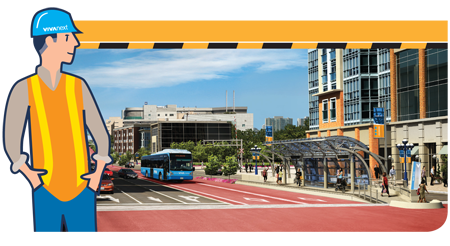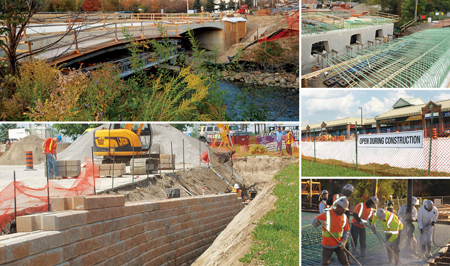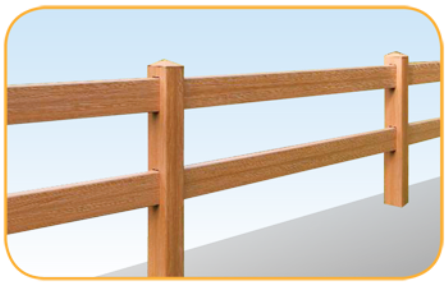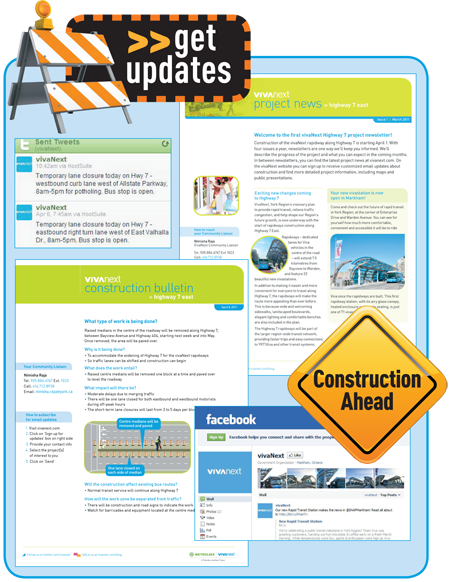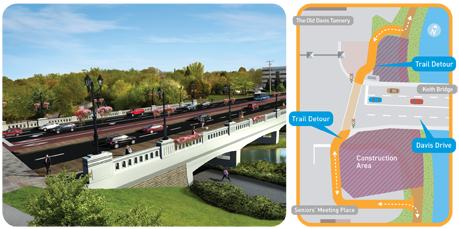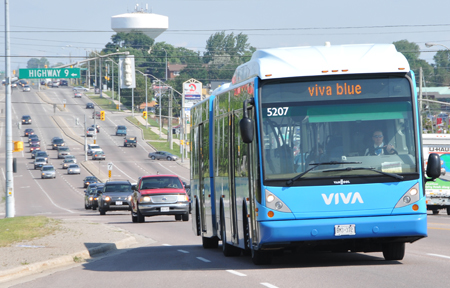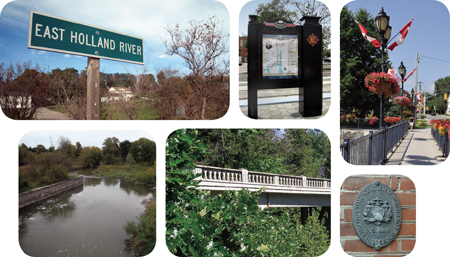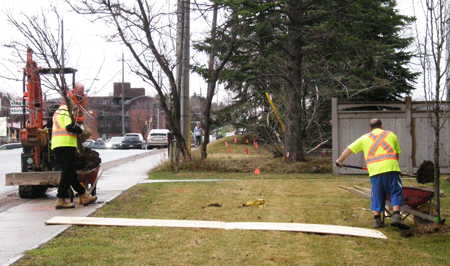
Tree buds are an early sign of spring, their canopies are beautifully green in the summer, and we all love their colours in the fall. For many of us, the mature trees on our streets and woodlots are attractive features of York Region’s established neighbourhoods.
So when we develop the rapidway construction schedule and plan, in addition to all the other construction tasks, one of our priorities is to protect and actually increase the number of trees along our routes.
As we design and build our rapidways along Highway 7 and Davis Drive in Newmarket, here’s what we’re doing to take care of the trees we have, and plan for new ones to ensure they continue to thrive into the future.
To start with, we all have a shared commitment to making sure our construction activities minimize impacts to our natural environment. This is a formal commitment that is made early on, in the Environmental Assessments that need to be completed and approved, long before work can begin.
One of our commitments is that our construction activities minimize impacts on trees. At the stage of final design for a rapidway segment, we walk the route with our Arborists to do a careful inventory of all the trees, inspecting each and tagging them, to make sure every tree is included in our construction drawings.
For those trees that are near the construction right-of-way, we look at ways to protect them by installing special protective fencing. We will also look at alternative construction methods where we can to work around a tree, or avoid harming its roots or branches.
For trees that are in the construction right-of-way, we identify any trees that could be safely dug up and replanted somewhere else. Then we work with the local community to identify locations to transplant the trees.
There are some trees that just can’t be saved, either due to a tree’s poor health or other factors. But our commitment is that for every tree we remove, we will replace it with at least one – if not more – new trees.
So this means that once the Highway 7 and Davis Drive rapidway projects are complete, there will be 45% more trees along Highway 7 East and nearly 27% more trees along Davis Drive. Highway 7 and Davis Drive will each be significantly greener when we’re done, and all in all, this adds up to more spring buds, and more fall leaves, for us all to enjoy in the future.
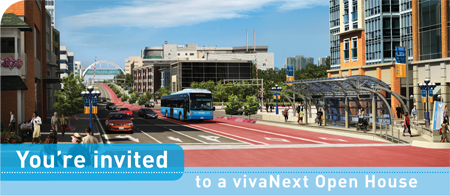 As you may have noticed, construction on Davis Drive is well underway. As construction continues each day, we want to make sure you are in the know about what is happening in your neighbourhood. Please join us at our open house meeting on Tuesday, May 15, 2012 to learn more about the rapidway construction in Newmarket along Davis Drive. You’ll have the opportunity to read up on maps and information boards, and speak with vivaNext representatives about what is to come for Davis Drive. This is a great chance to learn about how rapidways will benefit Newmarket and you as a resident.
As you may have noticed, construction on Davis Drive is well underway. As construction continues each day, we want to make sure you are in the know about what is happening in your neighbourhood. Please join us at our open house meeting on Tuesday, May 15, 2012 to learn more about the rapidway construction in Newmarket along Davis Drive. You’ll have the opportunity to read up on maps and information boards, and speak with vivaNext representatives about what is to come for Davis Drive. This is a great chance to learn about how rapidways will benefit Newmarket and you as a resident.
